Few things are as exciting as the discovery of a fully developed artistic talent. In the case of 98-year-old Luchita Hurtado, whose work was neglected for years and rediscovered only recently in among the estate of her late husband, the artist Lee Mullican, such talent seems to have been hiding in plain sight.
Born in Venezuela, raised in New York and resident in California for much of her life – with a few international pit stops in between – Hurtado has been associated with several influential artistic circles. Through her second husband Wolfgang Paalen, she was involved with the Surrealists in Mexico in the 1940s; via Paalen and Mullican in California, the metaphysics-driven Dynaton movement; in the 1970s, and under her own steam, the LA Council of Women Artists. ‘I Live I Die I Will be Reborn’, however, is the artist’s first solo museum show. The works here tell of a restless spirit using different visual modes to grapple with themes including procreation, domestic life, and the body as landscape, much of it made during nocturnal reprieves from an absorbing, and sometimes tumultuous, family life.
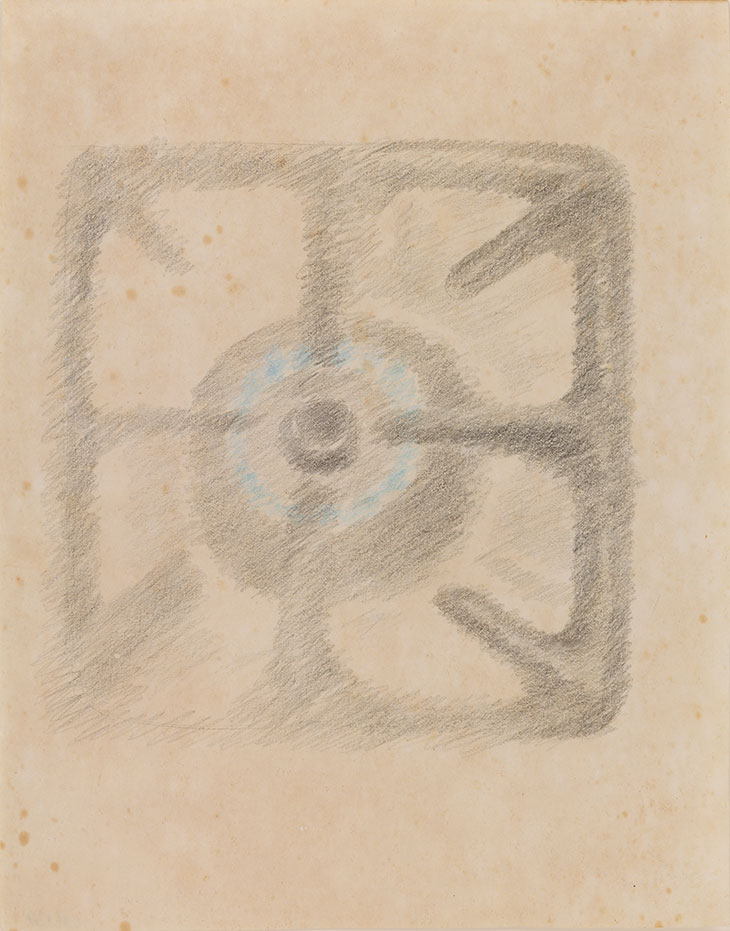
Untitled (c. 1938), Luchita Hurtado. Photo: Genevieve Hanson. Courtesy the artist and Hauser & Wirth; © Luchita Hurtado
To your right on entering the gallery is a curiously numinous drawing of a lit gas stove made by Hurtado at the age of 18, which immediately foregrounds her interest in capturing light and her ability to transform and elevate the domestic. (A later series of oil ‘canvasettes’ from the mid ’70s, loosely titled ‘Moth Lights’, features white squares or rectangles surrounded by halos of intense colour in a deceptively simple, effulgent tapestry.) Early works composed of angular, totemic forms reach sombre perfection in a crayon and ink study of a female torso dated around 1951. The work was made in a time of upheaval, coinciding with the end of her marriage to Paalen and the start of a relationship with Mullican, and just a few years after the traumatic loss of a child; with arms crossed and black vertical lines covering the mid-section, Hurtado evokes a closed, defensive body. On the opposite wall is the figurative self-portrait Luchita – Dark Years (c. 1954), its expressive paintwork suggesting exhaustion, grief and grim self-knowledge.
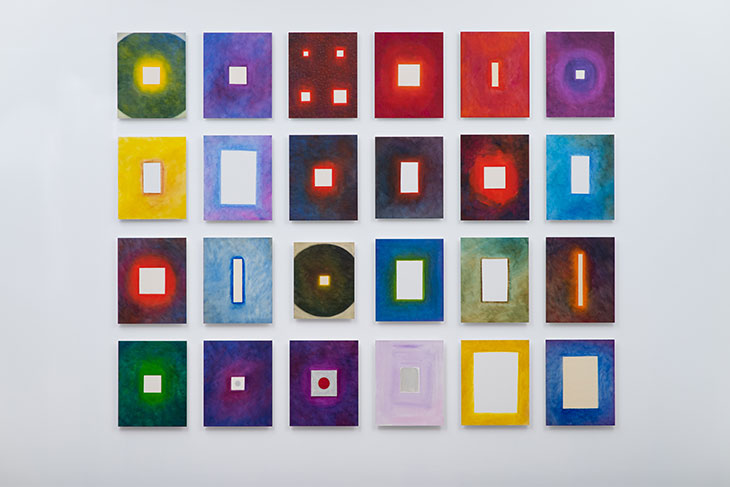
Untitled (c. 1975), Luchita Hurtado. Installation view of ‘Luchita Hurtado: I Live I Die I Will Be Reborn’, Serpentine Galleries, 2019. Photo: Hugo Glendinning. © Luchita Hurtado
Hurtado’s biography can at times feel close to the surface and at other times shrouded. In one work on paper from 1965, the artist is viewed obliquely, in segments; a collection of oils and charcoal on paper labelled Untitled (A Time of Being Alone) (1969) show cropped scenes of coitus. Another work on paper from around 1967 featuring dense, calligraphic swirls is quite literally sliced up, into eight rearranged panels – a technique Hurtado came back to in her paintings made for the Women’s Building in LA in 1974. A selection of these are shown in the North Powder Room of the gallery — similarly dense, sometimes multi-panel canvases of graphic paintstrokes containing obscured words or phrases.
This sense of concealment in Hurtado’s work comes across as neither coy nor self-effacing but rather reflects a budding creative identity, one that crystallises in a series of beguiling self-portraits made between 1969 and 1971 of the artist’s body seen from the neck down. Grouped under the title ‘I Am’, they picture the artist’s soft curves as she traverses folksy patterned rugs, lights a cigarette or holds a piece of fruit. The flare of a lit match, or a beam of light sneaking across the canvas, charges the domestic sphere Hurtado inhabits with something close to magic. This perspective turns heavenward as the decade progresses, to deep blue skies seen through voids in an undulating topography strikingly similar to that of the artist’s body in the ‘I Am’ paintings.
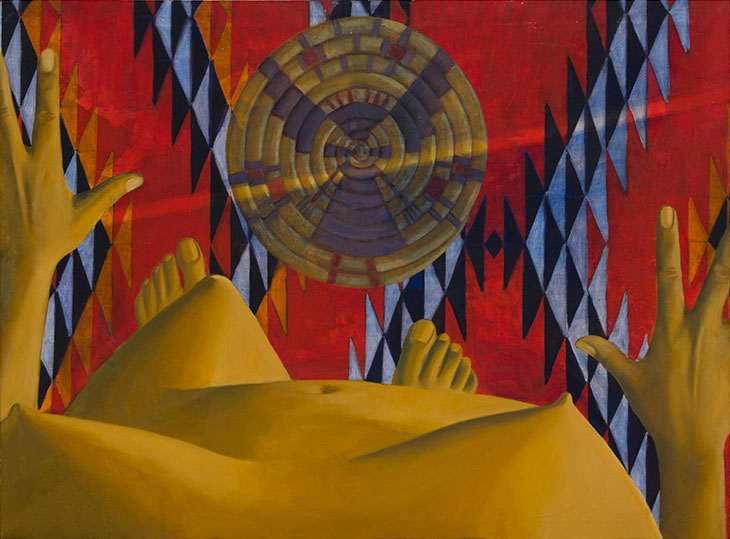
Untitled (1969), Luchita Hurtado. Hammer Museum, Los Angeles. Photo: Jeff McLane. Courtesy the artist and Hauser & Wirth; © Luchita Hurtado
The connection between the artist, the Earth and the cosmos is clearly expressed in very recent paintings of bodies mingling with their landscapes, a human heart radiating vegetal lines or a series of paintings of crowning babies. In each of the latter pieces, a little face peers back at the viewer from between the valley created by the mother’s legs, suggesting the spark of a consciousness — given the title of the exhibition, very possibly the artist’s. Dispensing with coded or abstracted lettering, a number of other recent works dealing with ecological catastrophe feature plain text, suggesting a new desire for directness. It is a thrill to come across a fully developed world like this, exhibited at its full maturity.
‘Luchita Hurtado: I Live I Die I Will Be Reborn’ is at the Serpentine Sackler Gallery, London, until 20 October.
Unlimited access from just $16 every 3 months
Subscribe to get unlimited and exclusive access to the top art stories, interviews and exhibition reviews.

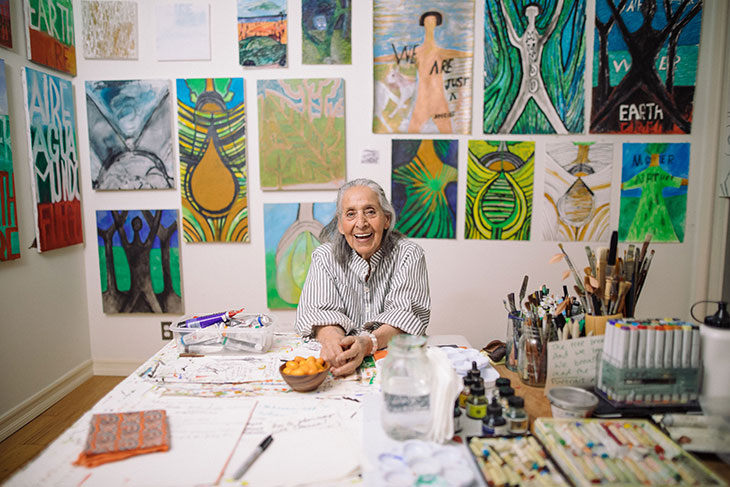
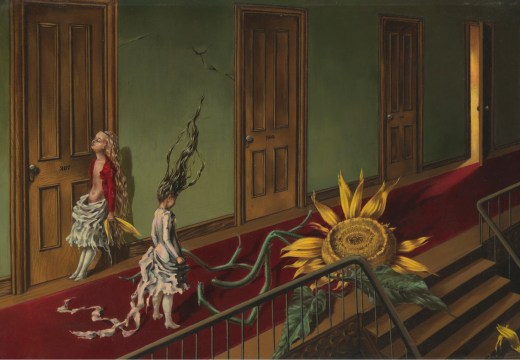
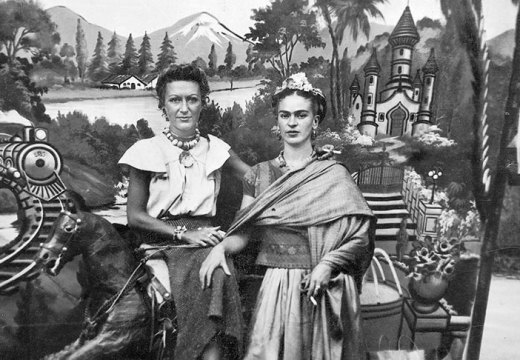
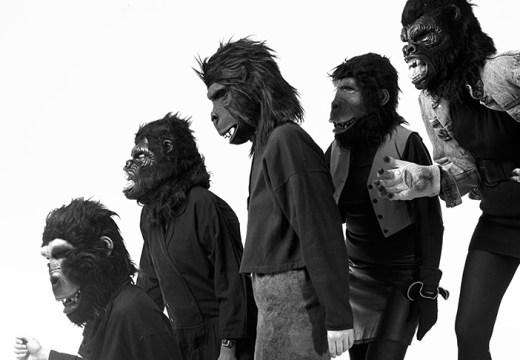









![Masterpiece [Re]discovery 2022. Photo: Ben Fisher Photography, courtesy of Masterpiece London](http://www.apollo-magazine.com/wp-content/uploads/2022/07/MPL2022_4263.jpg)
It’s time for the government of London to return to its rightful home